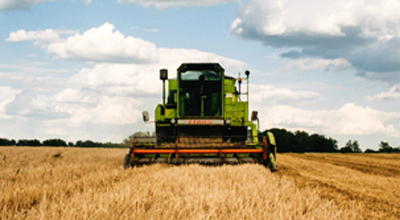
Image: Pixabay
China's huge livestock sector is facing rising feed costs as the country's worst power outages in years have forced the closure of soybean crushing plants, reducing supplies and driving up prices, analysts and industry participants said. . The rise in feed costs comes at a bad time for China's farmers, many of whom are struggling with losses and weak margins due to low hog prices in particular.
{module Form RD}
At least half of soybean crushing plants in north and northeast China have been closed since last week and will remain closed at least until after the National Day holiday on Oct. 1, a plant manager and a purchasing manager told Reuters of feed, under condition of anonymity. they were not allowed to speak to the media.
The crushers transform soybeans into soy flour, a critical protein in the diet of pigs, chickens and fish.
The volume of soybeans ground across the country this month fell by 9.4% compared to August, to 7.68 million tonnes, consultancy MySteel said in a report on Thursday.
Prices for SM-EXFPKT-STD soybean flour in Tianjin, a major northern production center, jumped 220 yuan (US $ 34) to 3,800 yuan per tonne last week, although prices fell slightly ahead of the Christmas holiday. National Day.
The increases in feed costs come as pig farmers struggle with low hog prices under pressure from increased production as stocks are rebuilt after the deadly African swine fever disease decimated the huge herd of pigs.
“Right now, pig farmers are being squeezed at each end. The price of hogs is incredibly low and demand is weak, at the same time the price of soybean meal and feed is rising,” said Darin Friedrichs, senior Asia commodity analyst at StoneX.
Feed prices are already 10% higher than last year, according to the Ministry of Agriculture and Rural Affairs, while live pig prices are at their lowest levels in more than two years.
Pig farmers lost more than 500 yuan per pig last month, the ministry said, and margins have fallen further since then.
Power generators have been forced to limit supplies to end users including oilseed crushers in large areas of China because of tight coal supplies and rising prices.
Electricity restrictions have hit production across a range of sectors, leading many analysts to downgrade growth prospects in the world's second-largest economy.
With so many factories closed, manufacturers of feed products that combine soybean meal with corn and other ingredients have rushed to source supplies, driving up prices.
Feed prices would likely rise further, Friedrichs said, adding that the power outage could also impact the drying of the corn crop that has just begun to be harvested.
Feed mills may have limited room to raise prices, however, with many already facing falling sales volumes and struggling to get paid, said a manager at a piglet feed manufacturer.
“We don’t want to kill our customers. Let’s wait until after the holiday to decide,” he said.
A fish feed producer in east China's Jiangsu province said his factory was forced to suspend operations last Monday and was losing 2 million yuan a day in sales at a crucial time.
“This is the key period for fish farming – it is the last month for fattening. If you don't feed the fish in the next month, they may die and all the work done previously will be wasted,” he said.
Fish prices have already jumped 50% from the previous year because of lower supply and stronger demand.
Some farmers are so desperate that they are feeding their fish unprocessed soybean meal, the Jiangsu-based feed maker added, which wouldn't be good for the fish or the water. (US $ 1 = 6.46 Chinese yuan renminbi)
Source: Notícias Agrícolas












